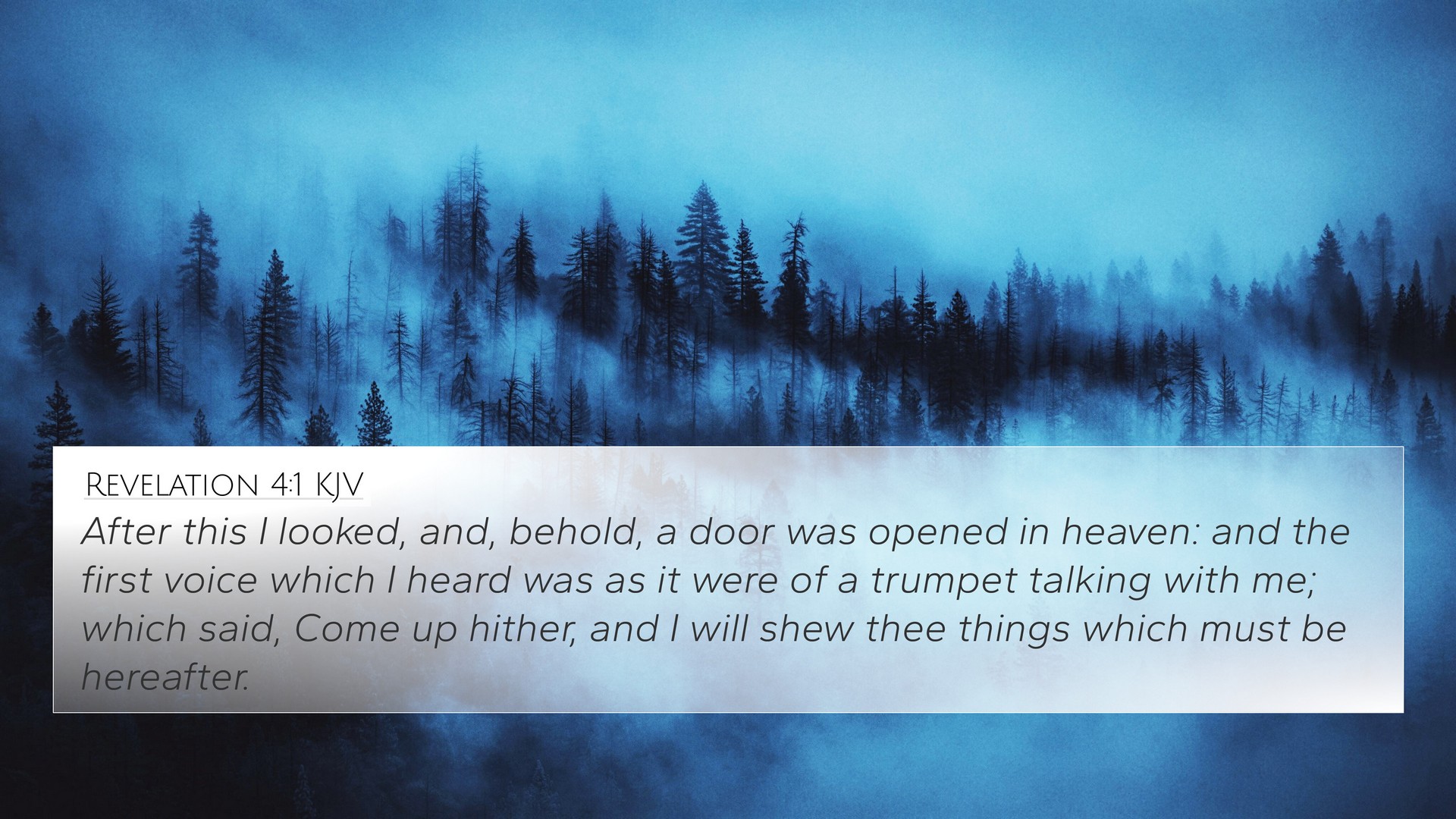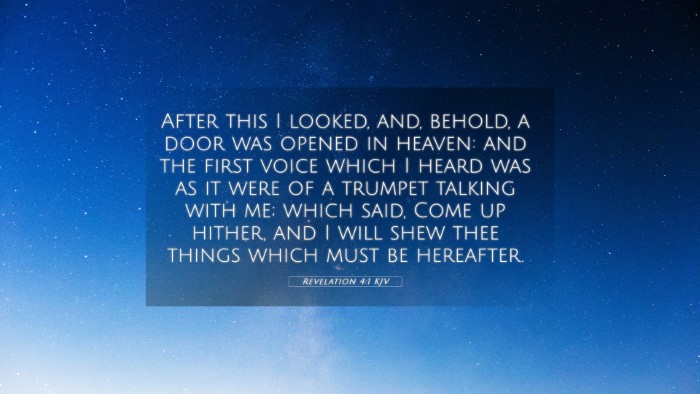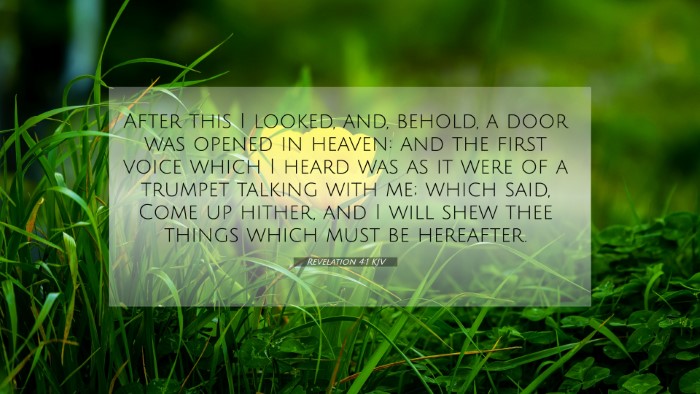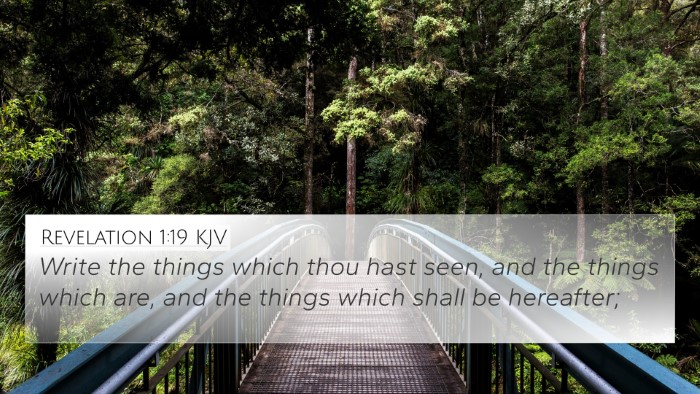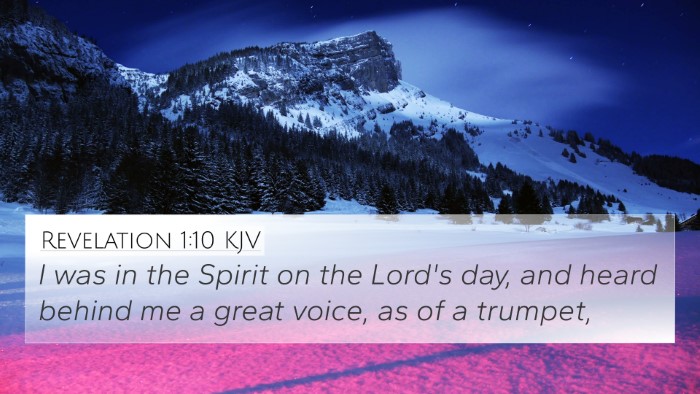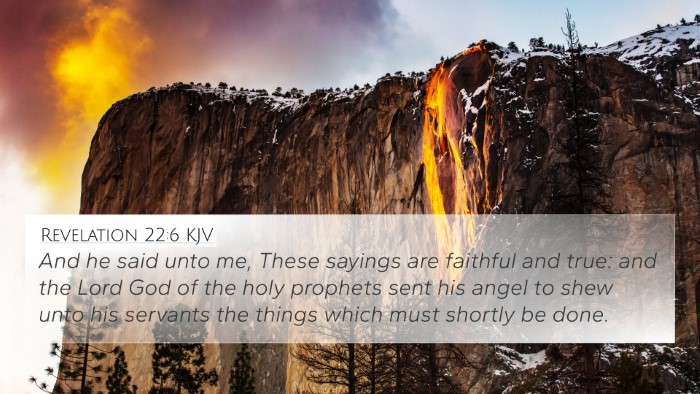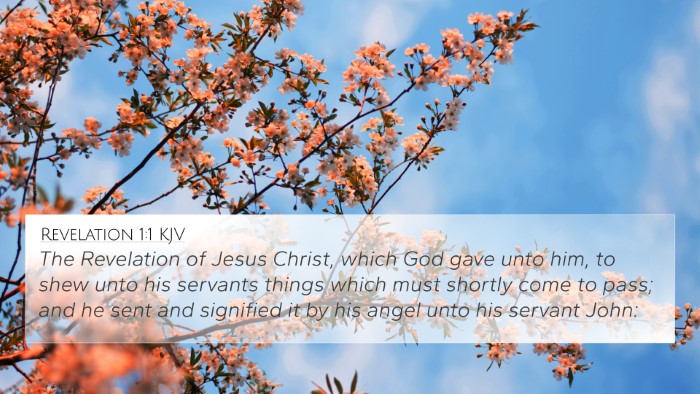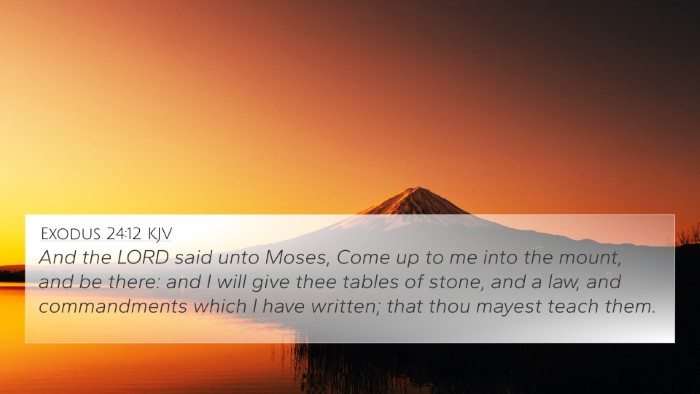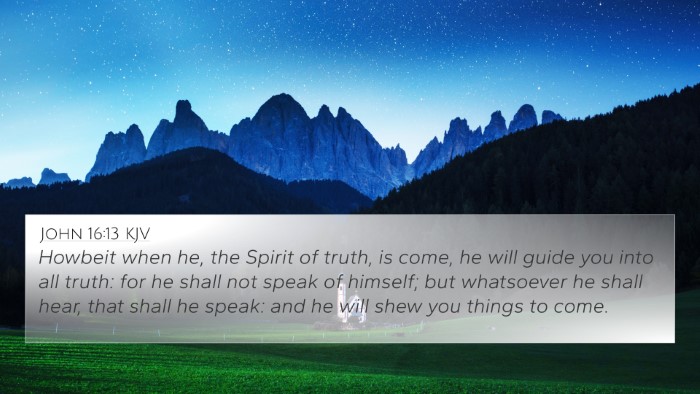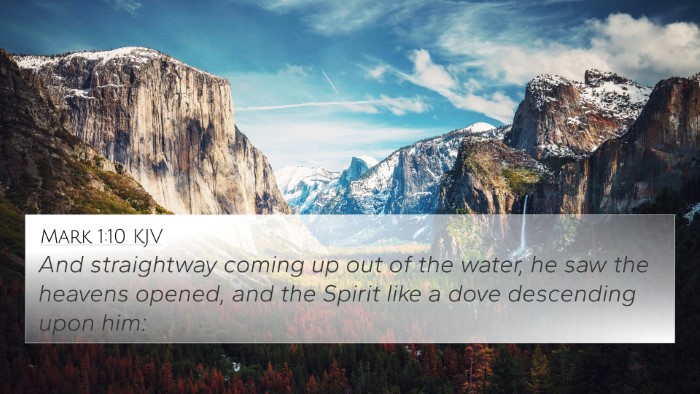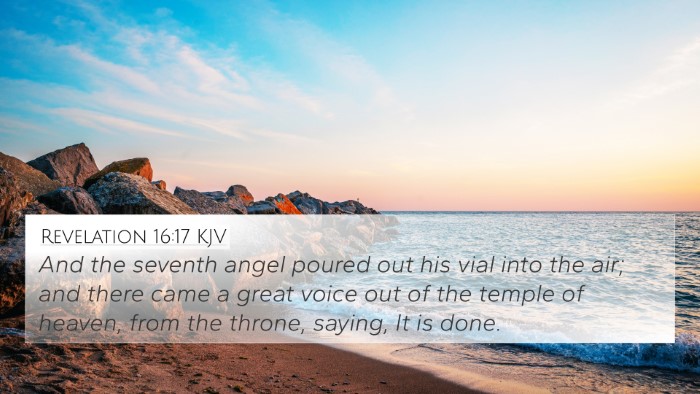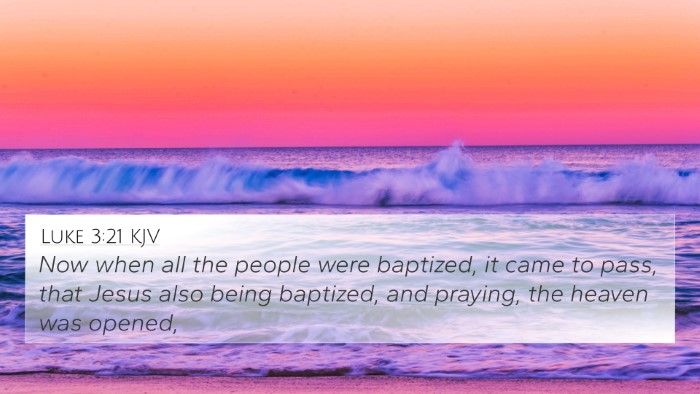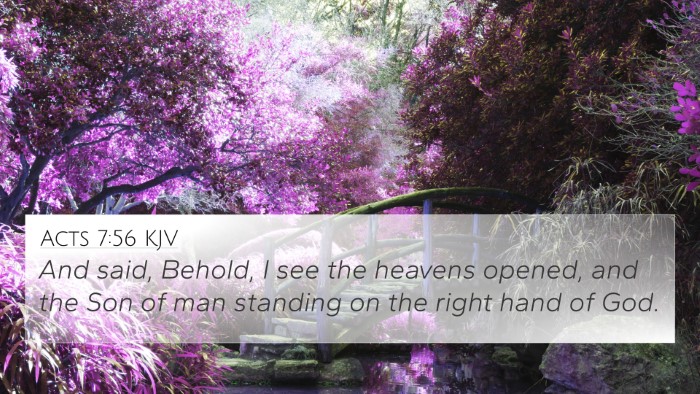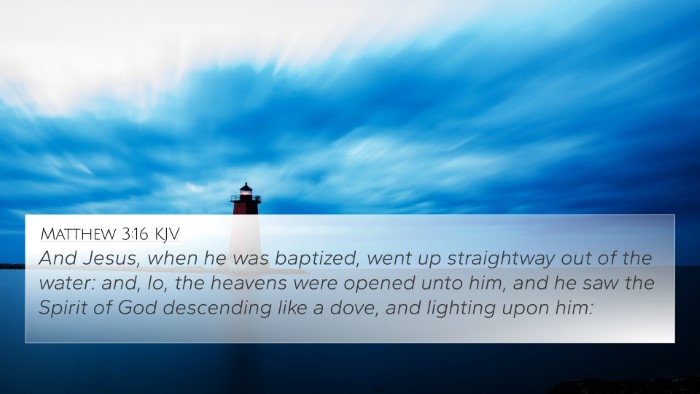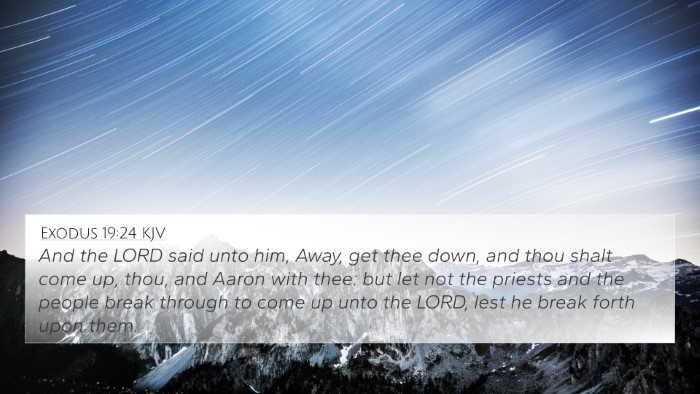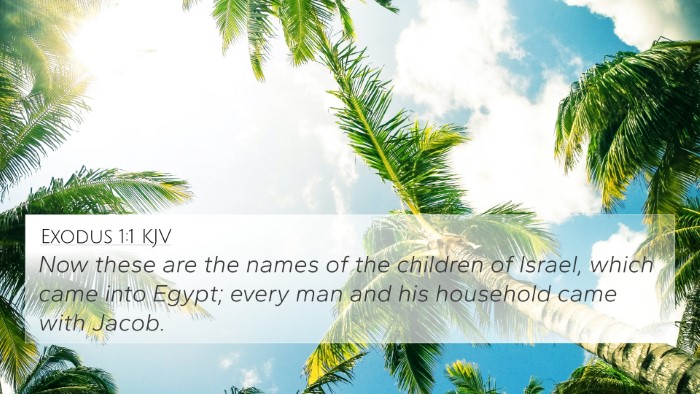Understanding Revelation 4:1
Revelation 4:1 states: "After this I looked, and behold, a door was opened in heaven: and the first voice which I heard was as it were of a trumpet talking with me; which said, Come up hither, and I will show thee things which must be hereafter."
This verse serves as a pivotal transition within the Book of Revelation, inviting the reader into a deeper understanding of the heavenly visions that follow. Below is a synthesis of insights derived from esteemed public domain commentaries, which aids in a comprehensive understanding of this verse.
Summary of Insights from Commentaries
Matthew Henry's Commentary
Matthew Henry emphasizes the significance of the "door" that is opened in heaven, suggesting it represents access to divine revelations. He notes that the voice akin to a trumpet calls John with urgency to witness the future. The command “Come up hither” illustrates an invitation to elevation in understanding and perspective.
Albert Barnes' Notes
Albert Barnes highlights the symbolic nature of the vision, interpreting the door as a symbolic threshold to heavenly realities. The voice he describes as loud and clear, akin to a trumpet, is indicative of divine authority and the serious nature of the revelations that are about to be shared. Barnes underscores that this call signifies a transition from earthly concerns to heavenly insights.
Adam Clarke's Commentary
Adam Clarke provides further depth by pointing out the timing of the vision, occurring after previous events in the narrative. He elaborates on the phrase "things which must be hereafter," suggesting it pertains to prophetic truths which must come to pass. Clarke emphasizes the need for attentiveness to what follows in the subsequent chapters.
Related Bible Cross References
Revelation 4:1 can be cross-referenced with several other biblical texts to enhance understanding:
- Isaiah 6:1 - The vision of God on His throne, emphasizing divine majesty.
- Ezekiel 1:1 - A heavenly vision, portraying similar themes of divine revelation and authority.
- John 1:51 - Jesus speaks of angels ascending and descending, linking earthly events to heavenly realities.
- 1 Thessalonians 4:16 - The theme of calling believers to come to the Lord, resonating with John’s invitation.
- Matthew 17:9 - The transfiguration as a glimpse into heavenly glory, akin to the revelations John receives.
- Revelation 1:10 - John’s previous divine encounter on the Lord’s Day highlighting his prophetic role.
- Revelation 21:10 - A future vision of the New Jerusalem coming down from heaven, reflecting the heavenly themes initiated here.
Theme: Prophetic Revelation
The thematic connection across these verses emphasizes viewing prophetic revelations as calls to understanding God's plan. Just as Isaiah and Ezekiel received visions, so does John, highlighting continuity in the prophetic tradition.
Tools for Bible Cross-Referencing
To explore the connections between scripture more effectively, various tools can be invaluable:
- Bible concordances
- Bible cross-reference guides
- Cross-reference Bible study books
- Digital Bible study tools
- Comprehensive Bibles that include cross-references
Inter-Biblical Dialogue
The inter-Biblical dialogue initiated in Revelation 4:1 encourages readers to engage in comparative Bible verse analysis. Observing how different scriptures converse with each other illuminates themes such as divine invitation, revelation, and the anticipation of future events.
Conclusion
In summary, Revelation 4:1 is a powerful transition into the heavenly visions and messages of the book. The invitation signifies deeper engagement with divine truths. By utilizing cross-referencing techniques, readers can find connections between this verse and others, enriching their understanding of God's overarching message.
